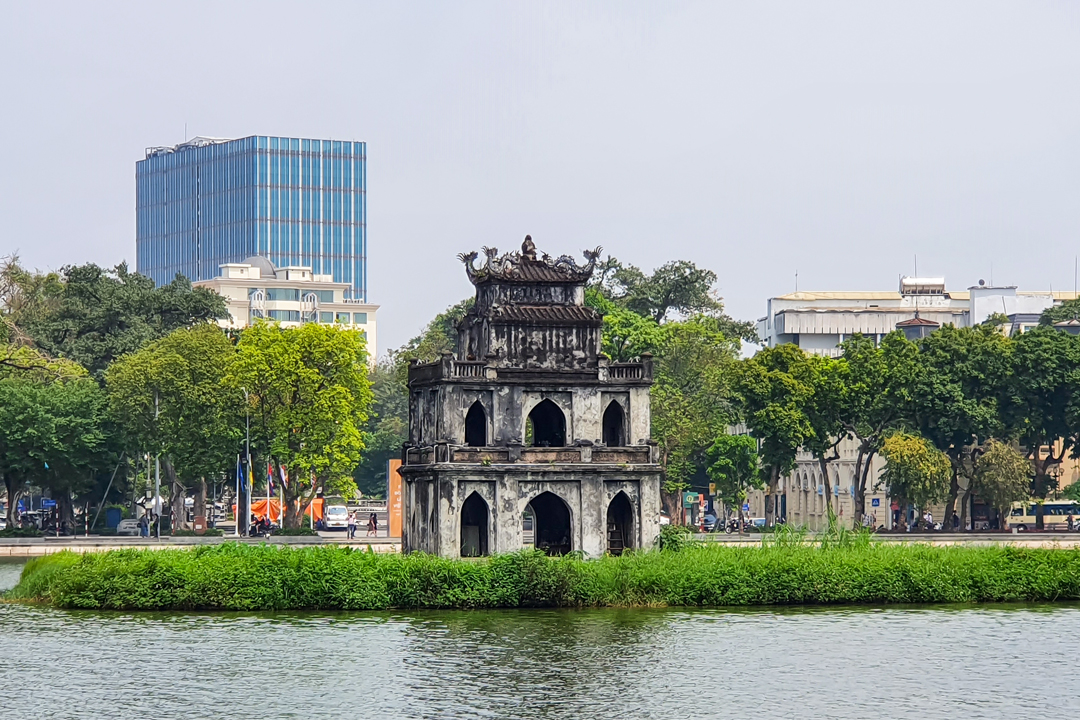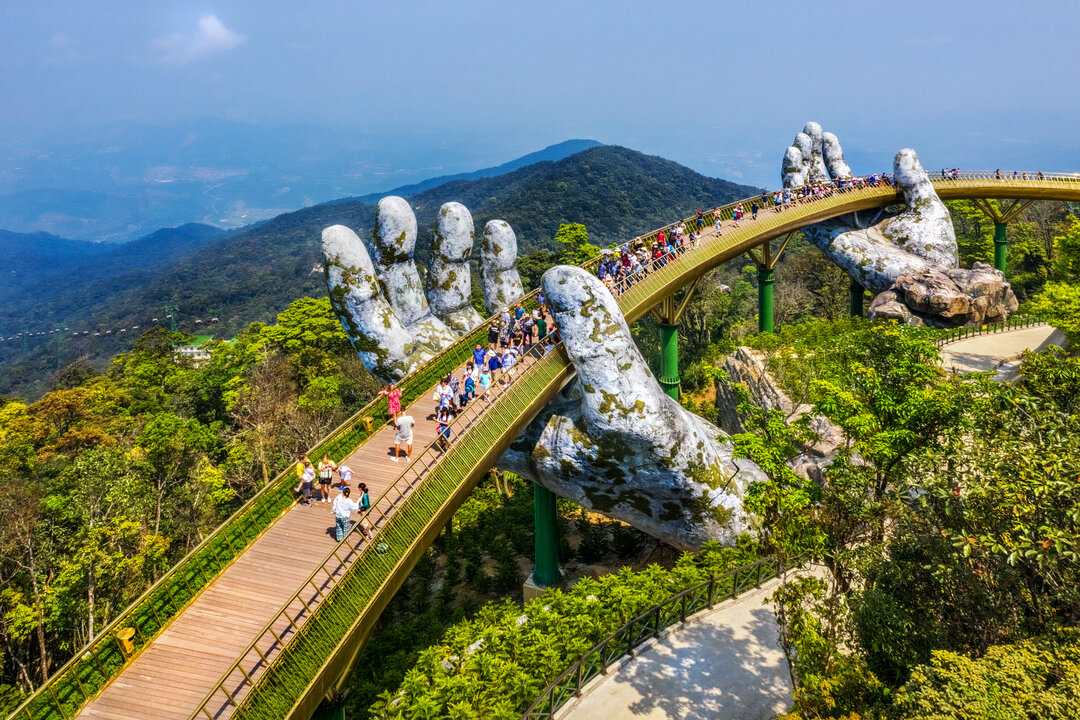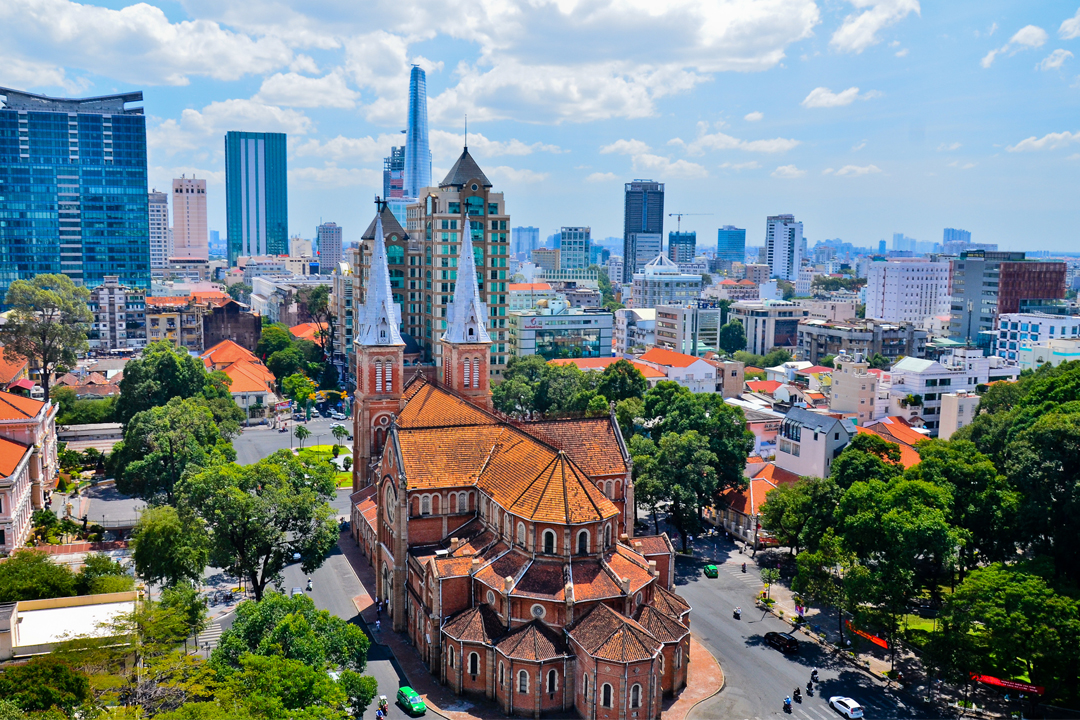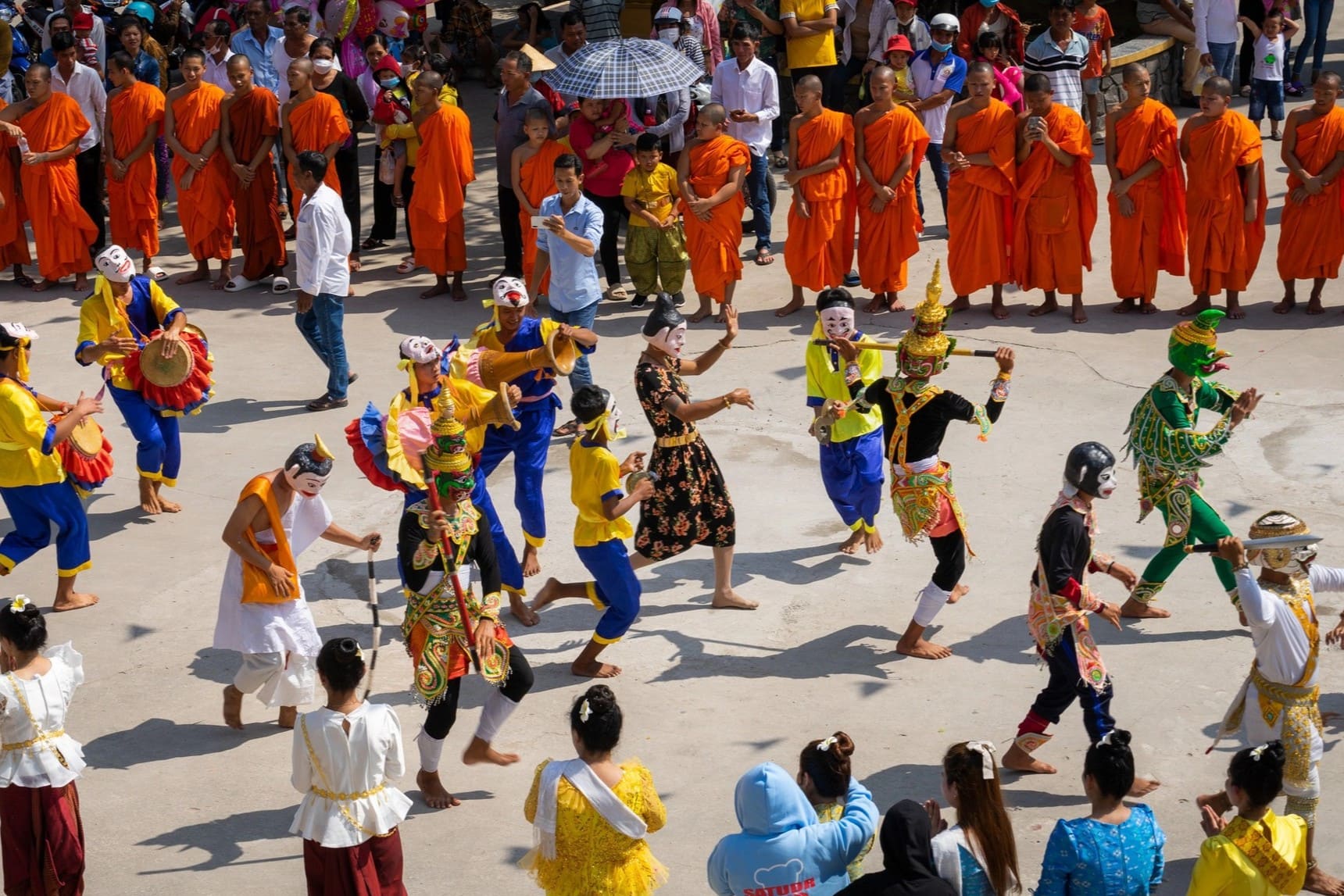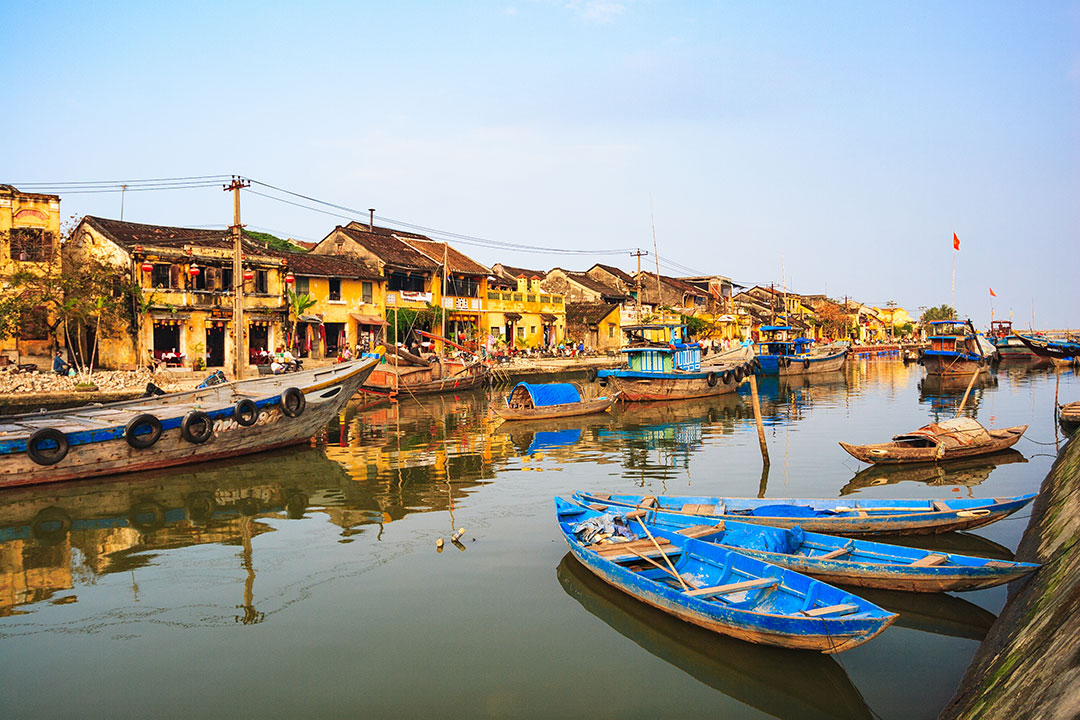Thu Bon River: Overview, History, Things To Do & Travel Guide
The Thu Bon River stretches over 200 kilometers and originates from the majestic Ngoc Linh mountain range in the Central Highlands. It flows through Quang Nam Province and empties into the East Sea at the Cua Dai estuary in Hoi An. It is one of the largest and most important rivers in Central Vietnam, with a basin area of about 10,350 square kilometers. The river carries fertile alluvium that enriches vast rice fields and serves as an essential lifeline for many riverside communities. More than a waterway, the Thu Bon River is a cultural symbol linked to Hoi An’s historic growth as an ancient port and UNESCO Site.
In this article, we will explore the role of the Thu Bon River in the economic, cultural, and social life of the people of Quang Nam. We will also discover the river’s unique natural values. At the same time, we will examine the environmental challenges it currently faces. Our journey along this legendary river will reveal stories about traditional craft villages, distinctive festivals, and unique tourism experiences along its banks.
Overview of the Thu Bon River
The Thu Bon River embarks on a captivating journey that is as complex as it is beautiful. Flowing through the province of Quang Nam, this river creates a lush geographical tapestry and sustains a vibrant ecosystem essential to the local communities. The river’s journey can be best understood through its geographical origins, the diversity of its ecosystem, and its response to seasonal variations and flooding.
Geographical origins and course
The Thu Bon River originates from the Ngoc Linh Mountain, part of the Annamite Range, near the intersection of Quang Nam and Kon Tum Provinces. This mountainous terrain sets the stage for the river's initial rapid descent, carving its way through valleys and generating significant hydrological energy. The river's course runs from west to east, draining an area of approximately 10,350 square kilometers before flowing out into the Bien Dong Sea. As it meanders through the heart of Quang Nam Province, its length is reported to be around 205 kilometers up to certain points. As it approaches the coastal plains near Hoi An, the river slows down, creating a delta that stretches towards the Cua Dai Beach where it ultimately meets the sea.
This configuration makes the Thu Bon River a central feature in the geography of Central Vietnam and an integral part of the area's river network. Its wide lower reaches, shaped by tides, irrigate agricultural areas like rice paddies and crop fields along its banks. This geographical journey is pivotal, as the river supports both agricultural productivity and the livelihoods dependent on these sectors.
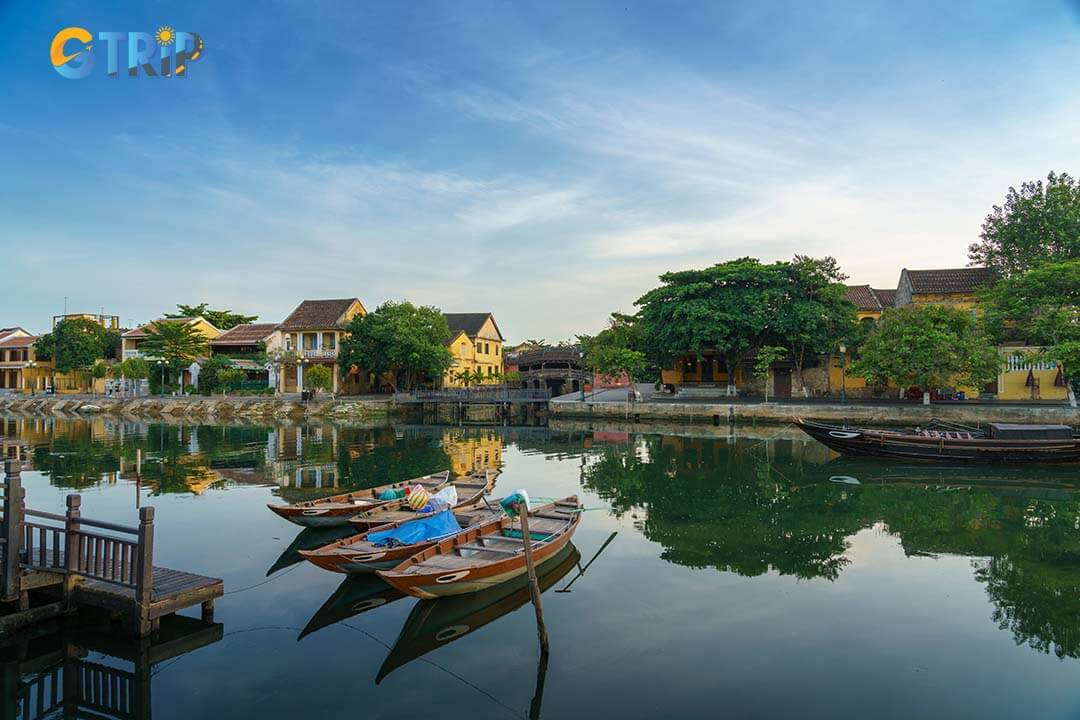
The Thu Bon River, originating from the Ngoc Linh Mountain, flows 205 kilometers through Quang Nam Province
River ecosystem and biodiversity
The Thu Bon River ecosystem is a vibrant and dynamic entity, teeming with biodiversity. Rich in flora and fauna, the river is home to various aquatic species, including fish and invertebrates that form an essential part of the local food chain. The riverbanks are lined with vegetation that provides habitat and breeding grounds for numerous bird species and other wildlife.
The river's ecosystems, including mangroves and wetlands, boost biodiversity and play key roles in carbon sequestration and shoreline stabilisation. The presence of fishing communities, notably around villages such as Kim Bong Carpentry Village and Thanh Ha Pottery Village, underscores the ecosystem's productivity. These communities rely heavily on the river for sustenance and economic activities. By maintaining these traditional livelihoods, the locals contribute to biodiversity conservation, promoting sustainable fishing practices that protect the river’s ecological balance.
Seasonal variations and flood impacts
The Thu Bon River is significantly affected by seasonal changes, especially during the monsoon (October to December), causing increased water volume and flooding. While these floods can disrupt infrastructure and communities, they also deposit nutrient-rich silt, rejuvenating the soil and boosting agricultural productivity.
This flooding cycle supports the region’s agricultural success but also presents challenges. Flooding can damage roads and homes, necessitating resilient infrastructure and careful planning for sustainable development to mitigate these risks.
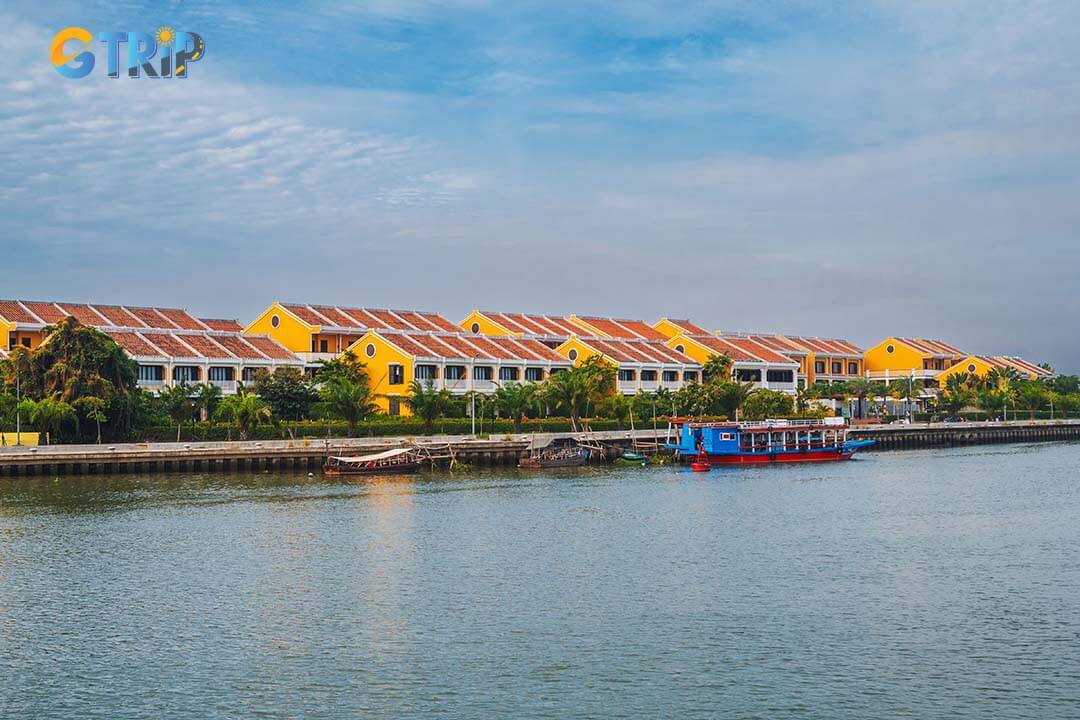
Monsoon flooding of the Thu Bon River enriches soil for agriculture but also disrupts infrastructure, requiring resilient planning
Thu Bon River's journey is a complex interplay of geography, ecological diversity, and seasonal dynamics. It shapes the physical landscape and ingrains itself into the social and economic fabric of Central Vietnam. The river is an ecological artery that sustains countless lives and traditions, rendering it indispensable to both the natural environment and the human communities it supports. So, while the river charts its eternal journey through the heart of Vietnam, it leaves an indelible mark on the land and its people, echoing its significance across time and space.
History of the Thu Bon River affecting Hoi An
The Thu Bon River, flowing through Hoi An, has played a key role in the town’s history, shaping its trade, development, and architecture. More than a geographic feature, it reflects the cultural and economic exchanges that built Hoi An’s identity.
Historical trade routes and commerce
The Thu Bon River was more than just a waterway, it was the lifeblood of ancient commerce in Central Vietnam. During the peak of Hoi An’s glory in the 15th to 19th centuries, the river served as a vital artery for trading ships from foreign lands. Merchants from China, Japan, and later Europe steered their vessels loaded with silk, spices, and ceramics up the river to reach Hoi An's bustling ports.
- Silk and spice route: These trade activities placed Hoi An on the map as a principal port of call along the Maritime Silk Road. The flow of goods was bidirectional, with Vietnam exporting its rich resources while absorbing cultural influences.
- Cultural exchange: Each trading nation brought with them not just goods but also cultural snippets, from architecture styles to culinary influences, evident even today in the town's unique cultural milieu.
Influence on Hoi An's development
The river's substantial contribution to Hoi An’s economic prosperity naturally catalyzed its urban development. As a burgeoning port city, Hoi An evolved into a melting pot of different cultures, as seen through its diverse societal structures.
- Urban planning: The urban design of Hoi An was heavily influenced by trade-route necessities, where proximity to the river dictated settlement patterns. This led to the development of a grid-like street system conducive to efficient movement of goods and people.
- Economic surge: The prosperity attributable to the river enabled the construction of elaborate merchant houses and public buildings. Which translated into increased employment opportunities and socio-economic advancement for the local population.
- Civic structures: Notable structures such as the Japanese Covered Bridge highlight the blending of architectural influences spurred by mercantile interactions facilitated by the river.
Ancient architecture along the river
The testimony of the river’s impact on regional architecture is demonstrated profoundly through the heritage structures along its banks. These edifices are windows into an era where Hoi An was a global port town, showcasing a fusion of architectural styles defined by international interactions.
- Japanese Covered Bridge: Constructed in the early 17th century, this iconic structure is a remarkable blend of Japanese design principles adapted to Vietnamese materials and techniques. Popular lore suggests it was built to link the Japanese settlement with the Chinese quarters, symbolizing the harmony fostered by trade.
- Traditional merchant houses: These homes, such as Tan Ky House, were built with a distinct blend of Japanese, Chinese, and Vietnamese features, each element narrating the story of the international traders who once converged in the town.
- Assembly halls: These served as cultural and religious hubs for foreign traders residing in Hoi An. The imposing Fujian Assembly Hall is notable for its elaborate architecture, underscoring the cultural exchanges that thrived on the riverbanks.
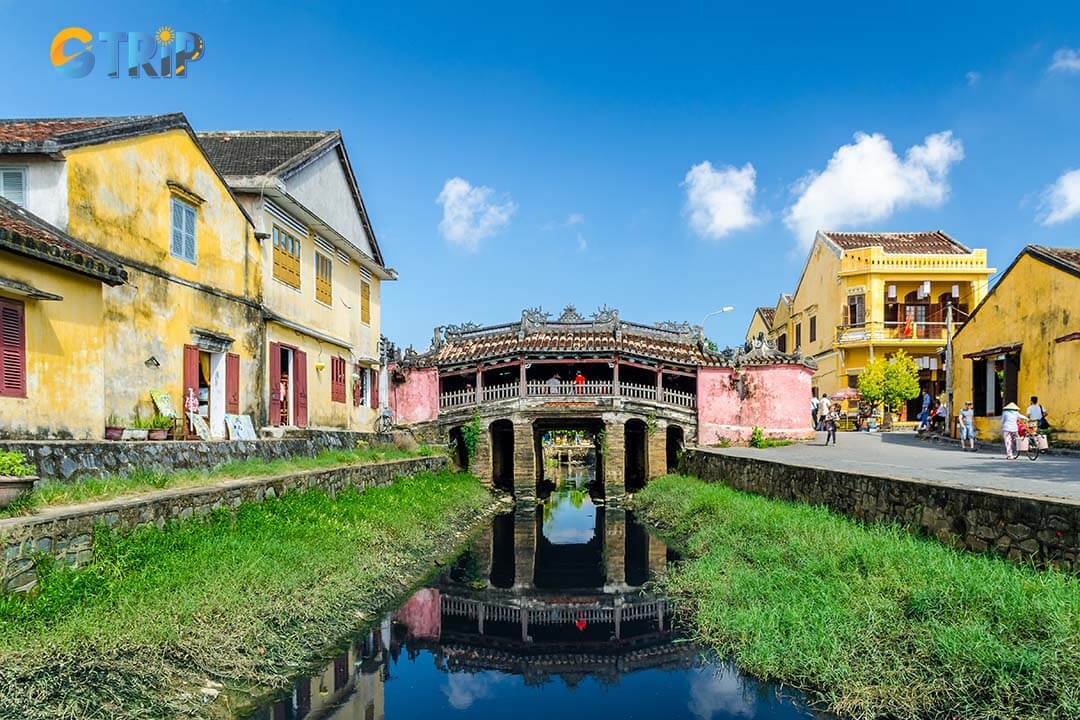
The Thu Bon River's influence on regional architecture is seen in heritage structures like the Japanese Covered Bridge, traditional merchant houses, and assembly halls
In conclusion, the Thu Bon River was not merely a geographical landmark but a transformative force that incubated the growth of Hoi An. Through trade, development, and architectural influences, the river facilitated a mosaic of cultural intermingling that reverberates in Hoi An's vibrant heritage. As a channel of trade and culture, the Thu Bon River has helped shape Hoi An into the UNESCO World Heritage Site it is today.
6 things to do when visiting the Thu Bon River
The Thu Bon River is more than just a scenic backdrop to Hoi An’s charm, it’s a living thread that weaves through the region’s cultural, historical, and daily life. Flowing gently through ancient villages and lush landscapes, the river offers travelers a chance to slow down and connect with the rhythms of local life. Here are some of the most memorable ways to explore the Thu Bon River and its surroundings: scenic boat rides, traditional craft villages and lively cultural traditions.
1. Take a sunset cruise
Experience the Thu Bon River's enchanting beauty with a sunset cruise. Departing in the late afternoon, these cruises align perfectly with the breathtaking sunsets over the water. Prime spots include An Hoi Islet, Cua Dai Beach, and Cam Nam Island. As the sky turns shades of orange, pink, and purple, you can enjoy a serene atmosphere and great photo opportunities. Many tours also include a traditional lantern release, adding a touch of magic to the journey. Reputable operators provide guided experiences, sharing stories of the river and nearby villages.
Price: Sunset cruises usually cost around 230,000 to 400,000 VND (approximately $9 – $15.48).
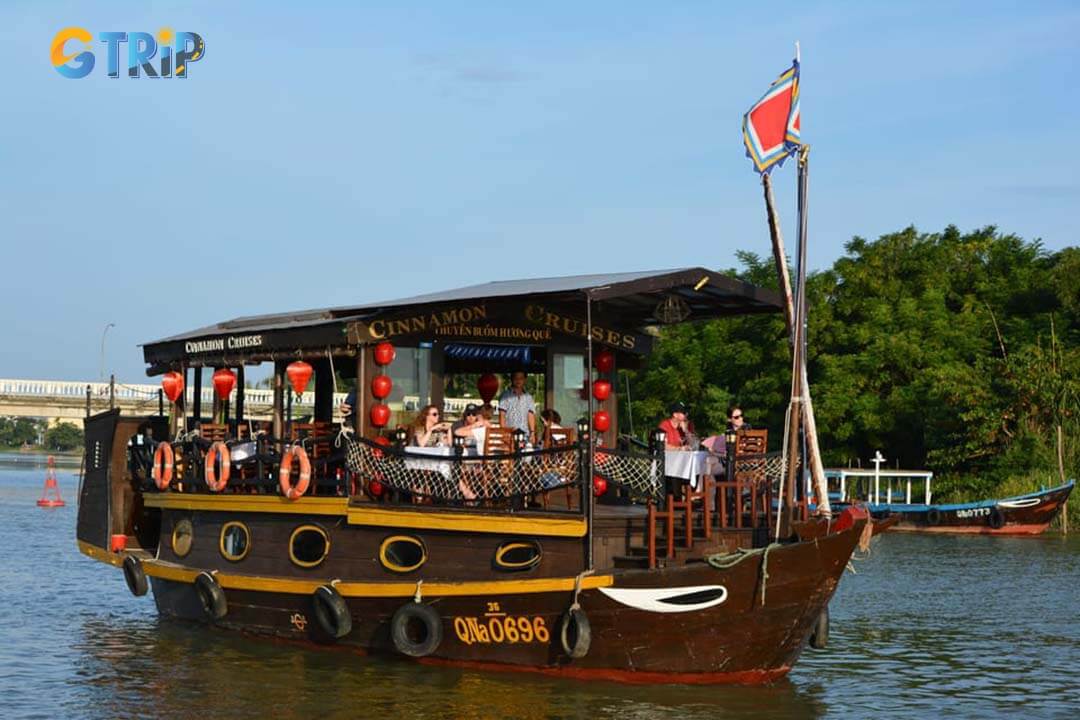
A sunset cruise on the Thu Bon River offers stunning views, a peaceful atmosphere, and a chance to take part in Hoi An’s iconic lantern release tradition
2. Explore fishing villages by sampan or basket boat
Delve into the traditional way of life along the Thu Bon River with a tour of the nearby fishing villages. Authentic wooden sampans (small, flat-bottomed boats) or unique basket boats (Thung Chai) provide an intimate exploration of the river's diverse ecosystems and centuries-old fishing techniques still practiced today. Observe fishermen casting their handmade nets to catch fish and other riverine resources, showcasing a sustainable lifestyle in harmony with nature. Early morning tours offer genuine glimpses into local life, as families participate in this essential economic activity.
The cost of a boat ride on the Thu Bon River can vary widely depending on the type of tour, boat, duration, and group size. On average, a simple boat ride could range from 150,000 to 300,000 VND per person (approximately $7-$13), but specialized or private tours may be priced higher.
3. Visit Kim Bong Carpentry Village
Immerse yourself in the craftsmanship excellence of Kim Bong Carpentry Village, located on the banks of the Thu Bon River. Witness skilled woodworkers creating intricate religious statues, graceful furniture pieces, and traditional wooden boats. Learn about the village's history, which dates back over 600 years, and its contributions to the restoration of Hoi An's iconic structures. Watch artisans finesse their craft using techniques passed down through generations, and support local economies by purchasing unique, handcrafted souvenirs directly from the artisans.
4. Discover the Thanh Ha Pottery Village
Take a short ride from Hoi An to Thanh Ha Pottery Village and discover the rich traditions of Vietnamese pottery. Rooted in centuries of history, this village retains methods from an era long past, using manual wheels and local clay to produce pots, vases, and other ceramic wares. Engage directly with artisans, learn about the history of the village, and even participate in pottery-making classes, crafting your own ceramic ware. This hands-on experience supports local economies and helps to preserve traditional skills, solidifying Thanh Ha's role as both a cultural and economic bridge.
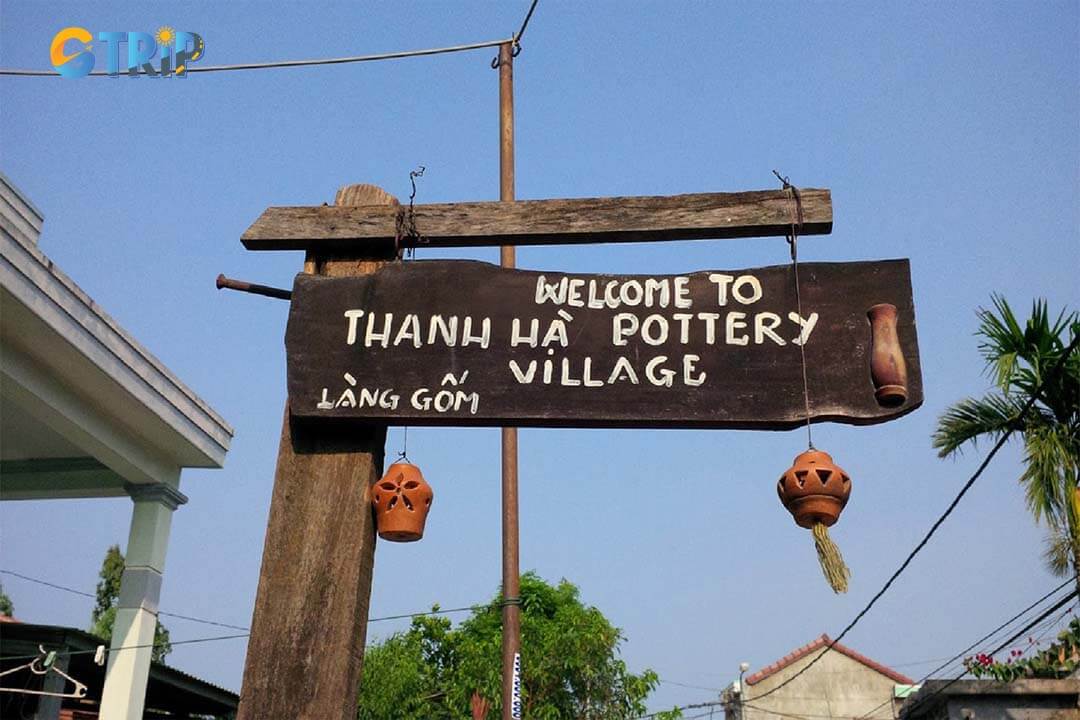
Explore Thanh Ha Pottery Village to experience centuries-old ceramic craftsmanship and try your hand at traditional pottery-making
5. Enjoy riverside dining
Experience the blend of gastronomic delight and serene views by dining along the Thu Bon River as evening falls. Choose from casual eateries to upscale restaurants offering a variety of cuisines. Popular options include Mango Mango (known for its innovative fusion cuisine), Cargo Club Cafe & Restaurant (offering exceptional views of the old town), and The DeckHouse An Bang Beach (providing a mix of riverside tranquility and beachside vibes). Enjoy the tranquil atmosphere and picturesque scenery as you savor your meal, contributing to the riverside's vibrant cultural scene.
6. Participate in a lantern release for a night tour
Engage in the deeply rooted Vietnamese tradition of releasing lanterns onto the Thu Bon River. Available along the waterfront from numerous vendors, these colorful lanterns symbolize hopes and wishes for the future, carrying personal dreams as they float downstream. The act of releasing a lantern on the Thu Bon provides a unique moment of reflection, connecting you to Hoi An's cultural narrative.
This experience is particularly magical during the monthly Hoi An Lantern Festival, which takes place on the full moon. Join a guided night tour to fully immerse yourself in the enchantment. These tours often include opportunities to learn about the festival's history and significance, participate in lantern-making workshops, and witness traditional music performances.
Observe locals and tourists releasing lanterns, creating a visually stunning and emotionally moving experience. For an ethical visit, opt for lanterns made from biodegradable materials to minimize environmental impact. Release lanterns in designated areas, following local guidelines to avoid causing harm to the river ecosystem. Support local artisans by purchasing lanterns from local vendors to contribute to the community's economy and support traditional crafts. You should choose a responsible and well-informed tour operator who will enhance the overall experience and ensure a meaningful and culturally respectful participation in this cherished tradition.
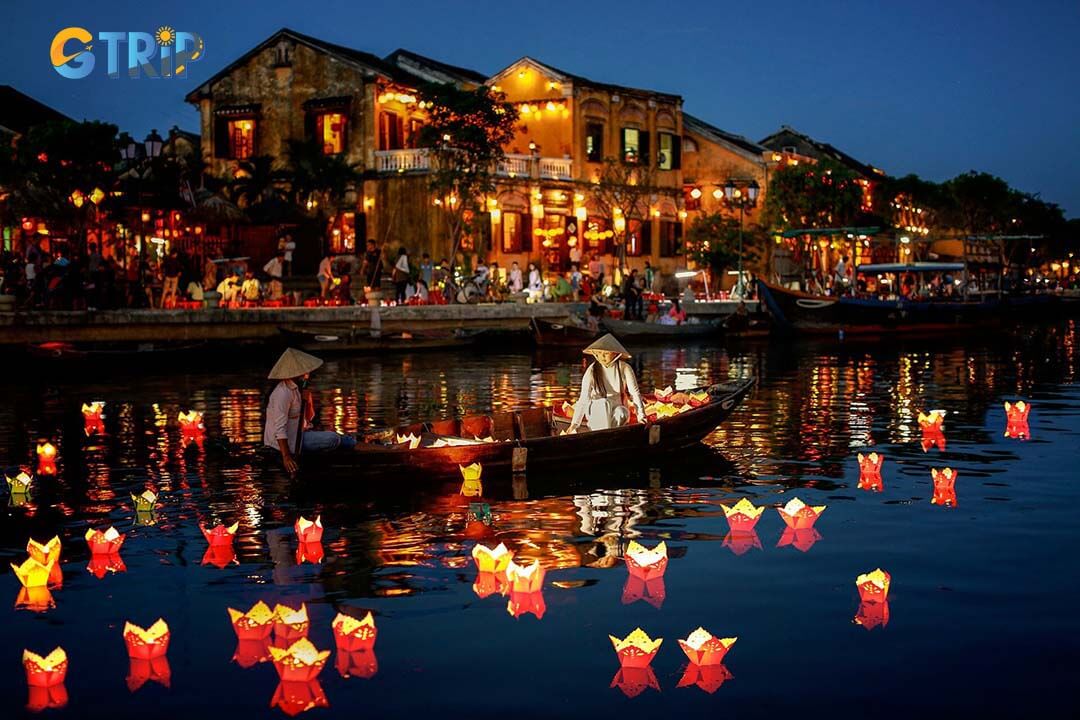
Release lanterns on the Thu Bon River in a magical tradition symbolizing hope, especially during the monthly Lantern Festival in Hoi An
Best times to visit the Thu Bon River
The best time to visit the Thu Bon River in Hoi An is during the dry and cooler months. Central Vietnam’s tropical monsoon climate features a clear contrast between the rainy and dry seasons. The period from February to May is considered ideal due to its mild temperatures and low rainfall. During these months, the river water is clearer, making it perfect for scenic boat rides or joining the famous floating lantern festivals.
On the other hand, the rainy season from October to December can pose challenges for tourism activities due to potential flooding and stronger river currents. That said, for travelers seeking a quieter experience and wanting to see a more peaceful side of Hoi An, visiting during the rainy season may offer a unique and tranquil perspective. But please prioritize your safety first, so you should consider when participating in activities on the Thu Bon River during this time.
How to get to the Thu Bon River?
The Thu Bon River flows through Quang Nam Province, with its most accessible and picturesque section running through the heart of Hoi An Ancient Town. Getting to the Thu Bon River typically involves reaching Hoi An first, and then accessing the riverfront from within the town.
From Da Nang International Airport (DAD)
The most common entry point is Da Nang International Airport (DAD), which has numerous domestic and international connections. From the airport, Hoi An is approximately a 45-minute to an hour's drive away. Here are your options:
- Taxi/grab: This is the most direct and convenient option. Taxis and ride-hailing services like Grab are readily available at the airport. Expect to pay between 350,000 VND to 450,000 VND (approximately $15 - $20) for a standard taxi or Grab ride. The price may vary depending on the time of day, traffic, and the type of vehicle.
- Private car transfer: Many hotels and tour operators offer private car transfers from Da Nang Airport to Hoi An. This is a comfortable and hassle-free option, especially if you have pre-booked accommodation. Prices generally range from 400,000 VND to 600,000 VND (approximately $17 - $26), depending on the vehicle type and service provider.
- Shuttle bus: Several shuttle bus services operate between Da Nang Airport and Hoi An. These are generally more economical than taxis or private cars but may involve waiting for departure and potential drop-offs at multiple locations. Expect to pay around 130,000 VND to 180,000 VND per person (approximately $6 - $8).
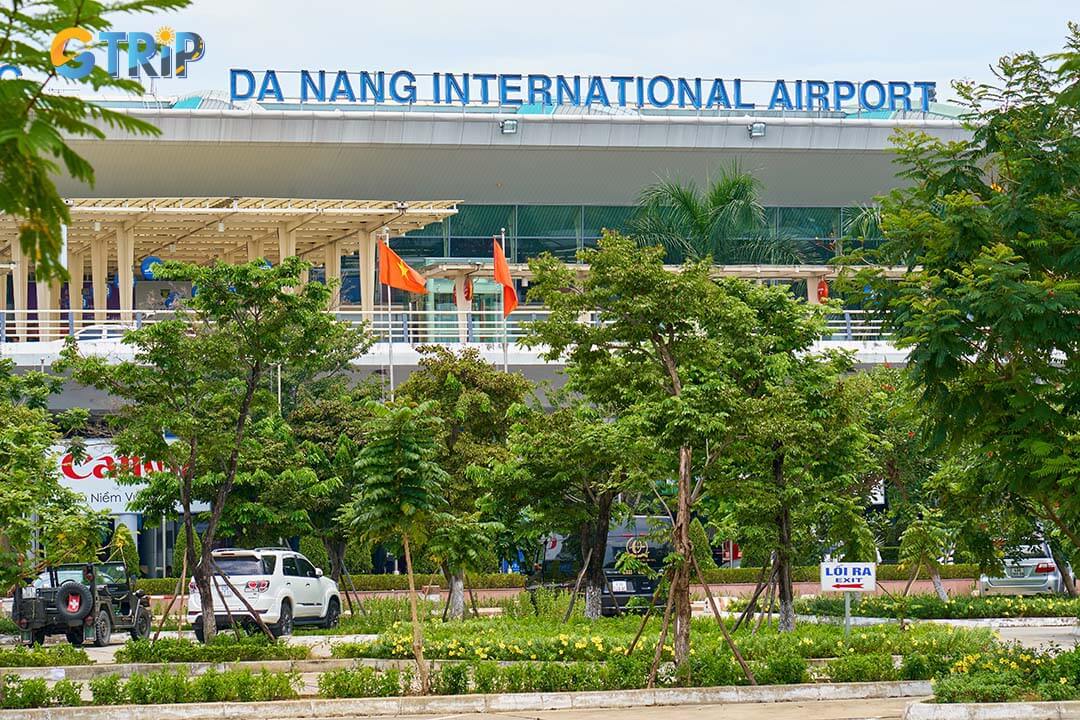
Travel from Da Nang International Airport to Hoi An in 45–60 minutes via taxi, Grab, private car, or shuttle bus
From Da Nang City
If you are already in Da Nang City, you have similar transportation options:
- Taxi/grab: Readily available throughout Da Nang, offering a convenient way to reach Hoi An. The fare will typically be 250,000 VND to 350,000 VND (approximately $11 - $15), depending on the distance and traffic conditions.
- Local bus: Public buses (e.g., the yellow bus) connect Da Nang and Hoi An. They are very affordable but can be crowded and time-consuming. The bus fare is around 25,000 VND to 30,000 VND per person (just over $1).
- Motorbike rental: Renting a motorbike is a popular choice for adventurous travelers. This gives you the freedom to explore at your own pace, but exercise caution, wear a helmet, and be aware of local traffic conditions. Rental costs range from 120,000 VND to 200,000 VND per day (approximately $5 - $9), excluding fuel.
From other locations in Vietnam
- By train: The nearest train station is in Da Nang. From there, follow the directions from Da Nang City to Hoi An. Vietnam's Reunification Express train connects major cities like Hanoi and Ho Chi Minh City with Da Nang. Train tickets vary greatly depending on the class and distance, but expect to pay anywhere from 500,000 VND to 1,500,000 VND (approximately $22 - $65) for a one-way ticket from Hanoi or Ho Chi Minh City to Da Nang.
- By open tour bus: Many tourist bus companies offer open tour buses that travel between major destinations in Vietnam, including Hoi An. These buses are a budget-friendly option and often include stops at popular tourist sites along the way. A ticket from Hanoi or Ho Chi Minh City to Hoi An typically costs between 300,000 VND and 600,000 VND (approximately $13 - $26).
- By plane: If coming from further distances (e.g., Hanoi, Ho Chi Minh City), flying into Da Nang International Airport (DAD) is the most efficient option. Flight prices vary greatly depending on the airline, time of year, and booking time, but expect to pay between 700,000 VND and 2,000,000 VND (approximately $30 - $87) for a one-way ticket.
- By private car/motorbike: If you're coming from nearby cities, you can hire a private car or rent a motorbike for a scenic road trip. This gives you the flexibility to stop at other attractions along the way. Hiring a private car can cost between 800,000 VND and 1,500,000 VND (approximately $35 - $65) per day, depending on the vehicle type and distance.
Once you arrive in Hoi An Ancient Town, the Thu Bon River is easily accessible on foot. Many streets lead directly to the riverfront, where you can enjoy scenic views, embark on boat tours, or dine at riverside restaurants. Most of the riverside activities are concentrated around the Old Town area, a UNESCO World Heritage Site, making it easy to navigate. The Hoi An Express tourist train offers service between Da Nang and Hoi An as well.
But if it is your first time here, you may be confused about where to go, then you can book a tour from a travel agency that offers Hoi An tours to help you schedule your visit to the famous places here effectively, suitable for your own time and needs.
Nearby attractions from the Thu Bon River
The Thu Bon River is the lifeblood of Hoi An, weaving through the heart of this historic city and connecting a rich tapestry of cultural, historical, and artisanal attractions. Below are some of the key attractions located near or accessible from the Thu Bon River.
Hoi An Ancient Town
Hoi An Ancient Town, a UNESCO site along the Thu Bon River, is famed for its well-preserved 15th–19th century architecture. Historically, it was a bustling international port where Vietnamese merchants traded with people from around the world, reaching its peak prosperity in the 17th and 18th centuries. Today, visitors strolling through its narrow streets can experience a peaceful ambiance enhanced by the gentle river waves and the sight of traditional boats. At night, Hoi An glows with colorful lanterns, lively markets, local food, and a festive vibe that reflects its rich cultural heritage.
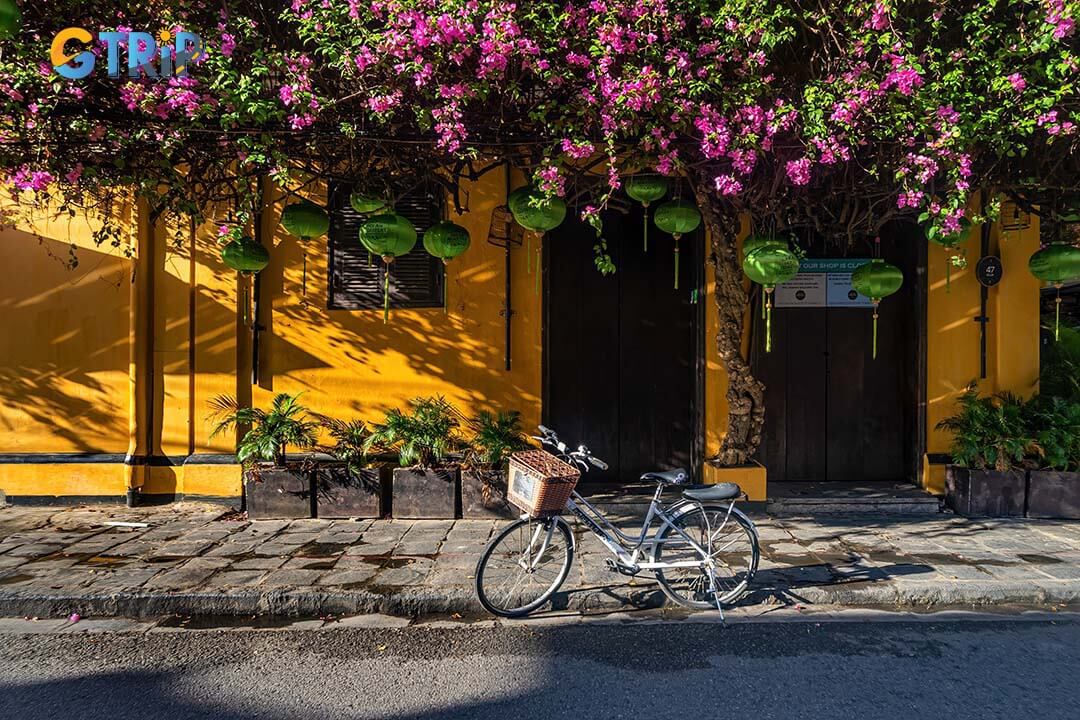
Hoi An Ancient Town blends historic architecture, rich trading heritage, and lantern-lit charm into an unforgettable cultural experience
Japanese Covered Bridge
The Japanese Covered Bridge is one of Hoi An’s most iconic landmarks close to the Thu Bon River. Built in the early 17th century, this historic bridge is famous for its unique architectural design that blends Japanese, Chinese, and Vietnamese influences. It served as a symbolic connection between Hoi An's Japanese and Chinese communities. The bridge’s ornate decorations and covered walkway make it a picturesque spot and a cultural emblem that reflects the town’s multicultural past. It remains a popular attraction for visitors exploring the riverfront and the ancient town.
Hoi An Memories Land
Hoi An Memories Land is a cultural theme park located near the Thu Bon River, connected by the Moonlight Bridge. This park, also known as Hoi An Impression Theme Park, offers visitors an immersive experience into the history, culture, and traditions of Hoi An and Vietnam through various artistic performances and exhibitions. One of its highlights is the Hoi An Memories Show, a renowned theatrical production that vividly portrays the town’s heritage and daily life along the river. The park and bridge offer panoramic views of the Thu Bon River, ideal for cultural insights and scenic experiences.
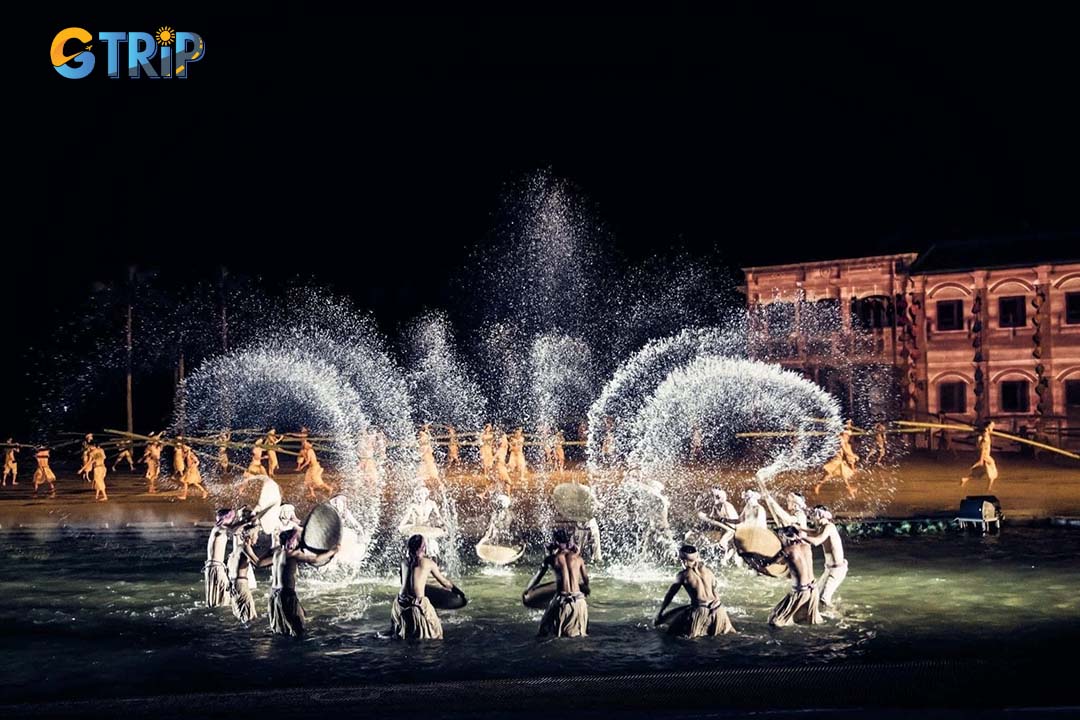
Hoi An Memories Land is a cultural theme park by the Thu Bon River, featuring immersive shows like the famous "Hoi An Memories"
Night market along the Thu Bon River
The Night Market along the Thu Bon River, also known as the Hoi An Night Market, is a lively and colorful attraction that comes alive after sunset. Located on Nguyen Hoang Street, it’s popular for its vibrant street food stalls offering local specialties, as well as vendors selling handicrafts, souvenirs, and iconic lanterns. The market’s riverside location enhances the experience, with illuminated lanterns reflecting on the water, creating a picturesque and festive atmosphere. Visitors often combine their market visit with a boat ride on the river, releasing floating lanterns as part of a traditional wish-making ritual. This market is a perfect place to soak up the local culture, taste authentic flavors, and enjoy the enchanting nighttime scenery of Hoi An.
FAQS when visiting the Thu Bon River
The Thu Bon River is central to Hoi An's culture, offering the enchanting tradition of lantern releases. This guide answers common questions about the frequency of lantern releases and the river's cleanliness, highlighting its cultural significance and ongoing preservation efforts.
Are lanterns released on the Thu Bon River every night?
The tradition of releasing lanterns on the Thu Bon River is one of Hoi An's most iconic and picturesque events. This practice typically occurs during the monthly full moon, known as the Hoi An Lantern Festival. On these nights, the town turns off its electric lights and illuminates the streets and river with colorful lanterns.
While lantern releases are not exclusive to festival nights and do happen more frequently, especially during peak tourist seasons, the full moon celebration remains the most spectacular and culturally significant. The custom of setting lanterns afloat is steeped in local beliefs, providing good luck and fulfillment of wishes, which adds a spiritual dimension to this visual spectacle.
Is the Thu Bon River clean?
The cleanliness of the Thu Bon River can be a concern, as it varies with the seasons and areas. In general, efforts have been made to maintain its cleanliness, especially in areas popular with tourists such as Hoi An. However, during the rainy season, runoffs can lead to increased pollution levels. Also, proximity to urban or industrial areas along its course might contribute to less pristine conditions.
Conservation initiatives and local government programs aim to tackle pollution through systematic waste management and community education. Visitors are urged to practice responsible tourism by avoiding littering and joining local cleanups to help protect this vital waterway.
Thu Bon River has long been a vital force shaping the cultural, historical, and ecological identity of Quang Nam Province, particularly Hoi An. As a historical trade route, it fostered rich cultural exchanges and contributed to the unique architectural and cultural landscape of the region. Today, it continues to support biodiversity, agriculture, and key cultural events like the Lantern Festival, making it central to both the local economy and heritage. Its ecological functions, such as sustaining rice paddies and buffering environmental shifts, underscore its ongoing relevance.
Preserving the Thu Bon River requires a collaborative approach, combining community efforts, government action, and sustainable tourism practices. Tackling challenges like flooding, erosion, and pollution is essential to maintaining its environmental health. GTrip - Vietnam Travel Agency travelers are encouraged to engage responsibly with the river through environmentally friendly activities and support for local communities. By balancing conservation with cultural appreciation, the Thu Bon River’s heritage can endure, providing inspiration and livelihoods for generations to come. By balancing conservation with cultural appreciation, the Thu Bon River’s legacy can endure, offering inspiration and livelihood for generations to come.

